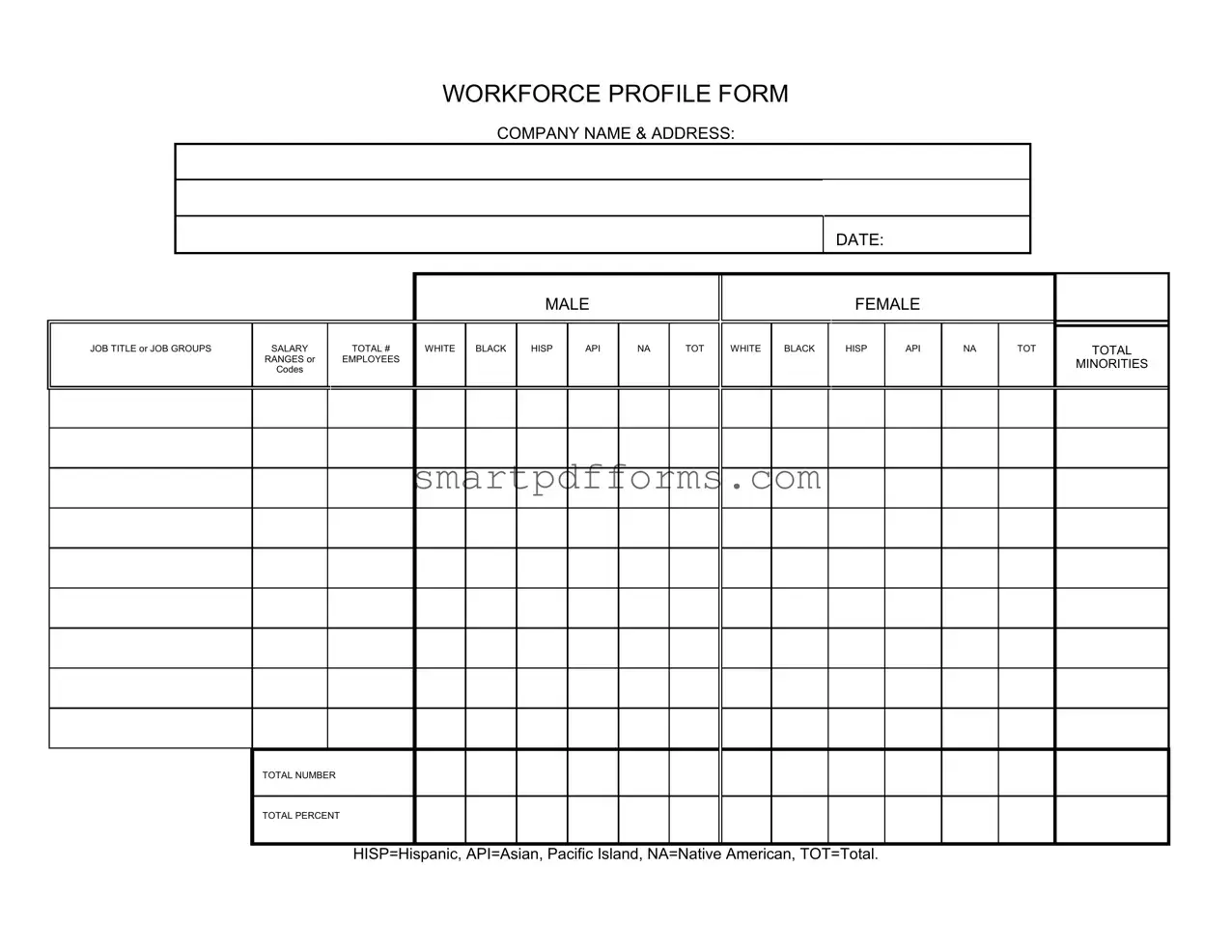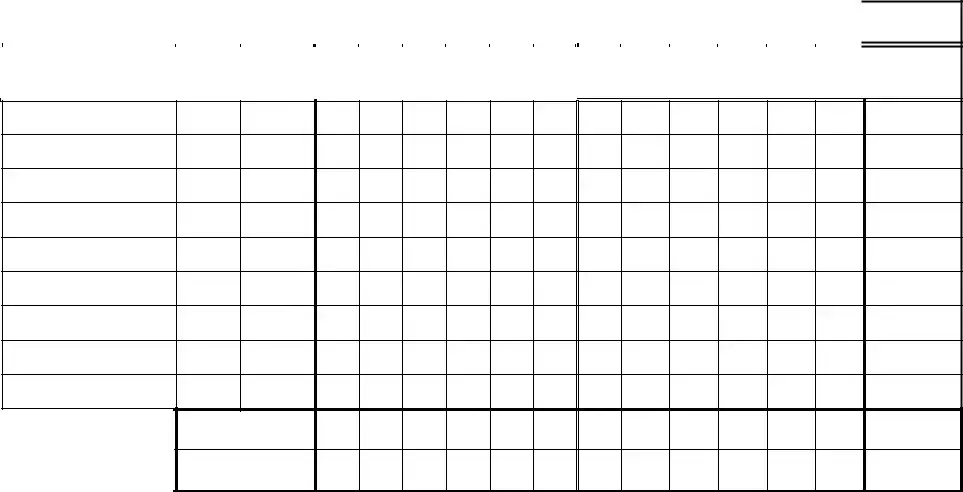Blank Workforce Profile PDF Template
The Workforce Profile form is a tool used to collect detailed information regarding the composition of a company's employees, including gender, job title or group, salary ranges, and racial demographics. This comprehensive form enables organizations to assess diversity, identify any gaps, and make informed decisions towards creating a more inclusive workforce. For those interested in capturing a clearer picture of their company's diversity landscape, filling out this form is a crucial step.
To begin the process of evaluating and enhancing your company's diversity initiatives, click the button below to fill out the Workforce Profile form.
Make This Document Now

